Founder's Day

Students in costume, one in stereotypical Native American dress

Students in costume, one in stereotypical Native American dress
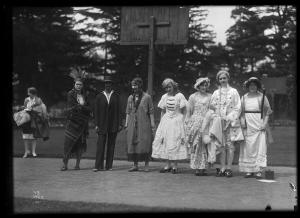
Students in costume, two in stereotypical Native American dress, one in dark makeup
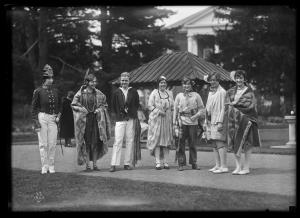
Students in costume, two in stereotypical Native American dress, another in what might have been intended to represent Romani dress
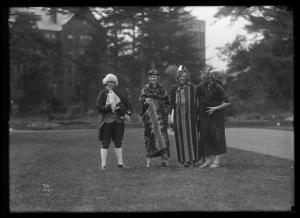
Students in costume, three in stereotypical Native American dress
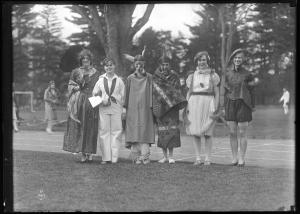
Students in costume, two in stereotypical Native American dress
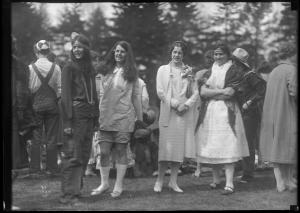
Students in costume, one in stereotypical Native American dress
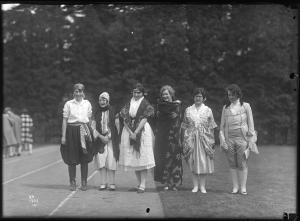
Students in costume, one in stereotypical Native American dress, three are wearing stereotypical Romani costumes
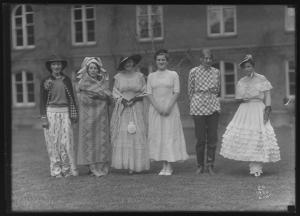
Students in costume for the Founder's Day Parade, one in stereotypical Native American dress
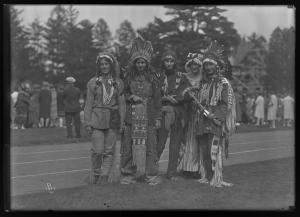
Students in costume including four in stereotypical Native American dress

Students in costume, one on a horse. Others are in what might have been intended to represent Native American dress

Students from Professor Burgess Johnson's journalism class with George Shepard Chappell posing in the snow with a dog. One student is in costume on a sled. The scene appears to be meant as a reference to Chappell's satire, "My Northern Exposure," which represents Native Americans and First Peoples

Students from Professor Burgess Johnson's journalism class with Johnson and George Shepard Chappell posing in the snow with a dog. One student is in costume on a sled. The scene appears to be meant as a reference to Chappell's satire, "My Northern Exposure," which represents Native Americans and
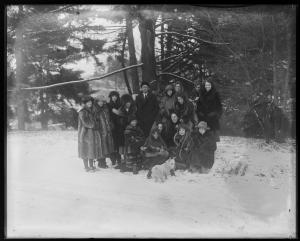
Students from Professor Burgess Johnson's journalism class with Johnson and George Shepard Chappell posing in the snow with a dog. One student is in costume on a sled. The scene appears to be meant as a reference to Chappell's satire, My Northern Exposure, which represents Native Americans and First
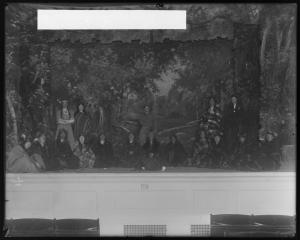
Skits, music and dance performed by faculty, students and staff. This scene features students and faculty in stereotypical Native American costumes
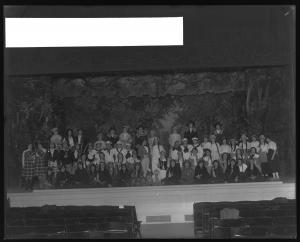
Full cast of the party, which included skits, music and dance performed by faculty, students and staff. Some are wearing stereotypical Native American costumes, others are dressed as "Puritans," Scottish and Irish bagpipers and dancers, and sailors
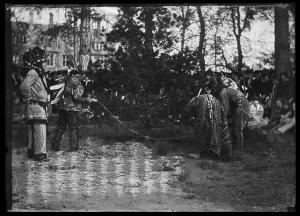
Performance given by the Class of 1931. Most participants are wearing sterotypical Native American costumes, including Professor Herbert E. Mills
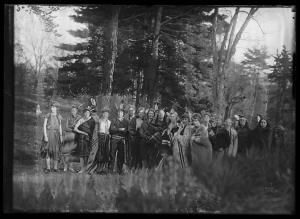
Performance given by the Class of 1931. Most participants are wearing sterotypical Native American costumes

Performance given by the Class of 1931. Most participants are wearing sterotypical Native American costumes, including Professor Herbert E. Mills
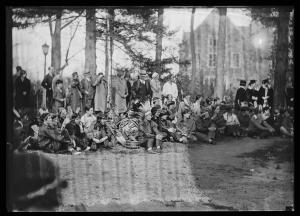
Performance given by the Class of 1931. Most participants are wearing sterotypical Native American costumes
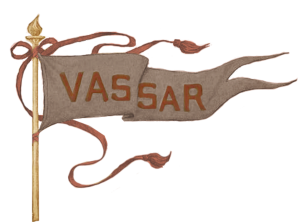
Here you will find digitized archival collections, oral histories, and more. We are continually expanding the collections and improving access. You may find additional digital resources that reside outside the digital library here, and a selection of Online Exhibitions here.
Collections Overview
The Archives & Special Collections Library is part of the Vassar College Libraries system. It holds the rare book, manuscript, and archival collections of the college. It collects, preserves, and makes available rare and unique collections, and also engages in teaching and outreach activities. This collection of finding aids describe items in both the Virginia B. Smith Memorial Manuscript Collection and the College Archives.
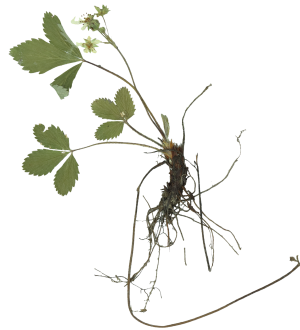
The Vassar College herbarium holds over 8,000 specimens of vascular plants, bryophytes, and algae. Holdings are primarily from northeastern North America, and include collections made by several notable 19th century botanists. To learn more about this project visit the website here.
Vassar College's institutional repository reflects the research and scholarly output of the Vassar College community. It provides access to senior theses, peer reviewed open access articles, and projects from a wide range of disciplines.